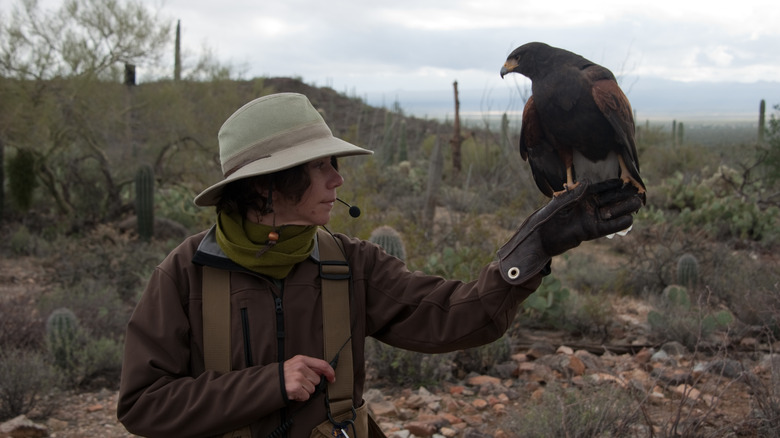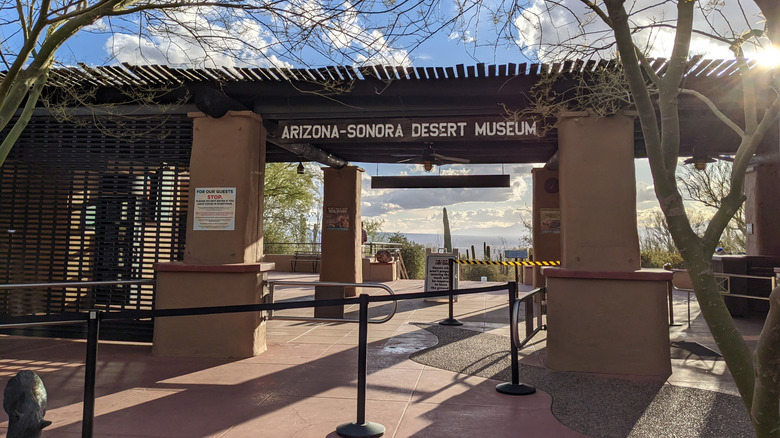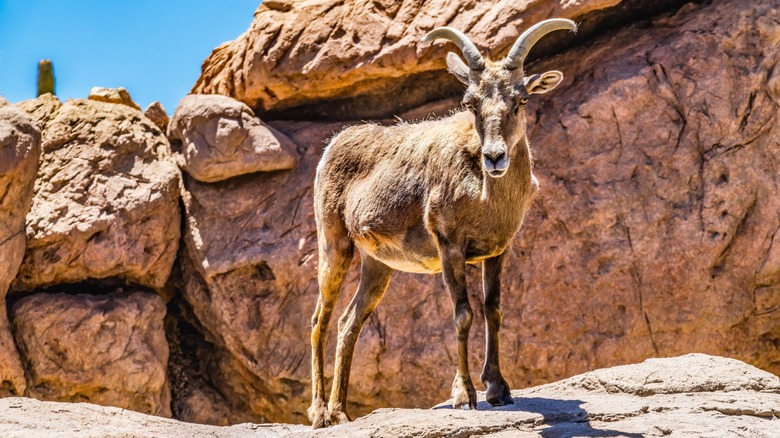Arizona's World-Renowned Botanical Garden Shares Space With A Zoo, Aquarium, Museum, And More
When you think of natural escape within a city, the metropolises of New York, Chicago, and Denver have some of the best botanical gardens in America. However, hidden in the Sonoran Desert near Tucson, Arizona, you'll find a spectacular botanical garden that also houses a world-class zoo, a natural history museum, and an aquarium.
The Arizona-Sonora Desert Museum began back in the 1950s as a non-profit organization to help residents of the booming area understand the environment they were living in, along with its connection to Mexico. The Sonoran Desert encompasses parts of Mexico, Arizona, and California and is actually the wettest desert on Earth. At the time of the museum's establishment, not much was widely known or understood about how the ecosystem worked. The Arizona-Sonora Desert Museum helped bring awareness to local communities and remains a strong voice in conservation today.
Tripadvisor ranks the Arizona-Sonora Desert Museum as the top tourist attraction in Tucson. It's also a favorite among locals, who simply call it the Desert Museum and visit it again and again when their guests come to town. In 2023, more than 300,000 visits were recorded. With its diverse offerings, this special spot in the desert can fill an entire day on your visit to the Grand Canyon State, so you'll want to give yourself plenty of time to explore the world-renowned site. It's also a good idea to plan ahead to ensure you'll see special timed events like the Raptor Free Flight, where you can experience birds of prey in action.
What to expect at the Arizona-Sonora Desert Museum
The museum is world-renowned for its collection of 56,000 plants in its botanical gardens. While you won't see them all in one visit, you will pause frequently to snap photos and read interpretive signs when strolling the grounds. Among the 15 distinct areas showcasing the collection, be sure to linger in the Cactus Garden. This 50-year-old collection of cacti and succulents from the Sonoran Desert is arranged in groups, allowing you to appreciate the subtle differences among species. For example, all the Echinocereus cacti — commonly known as hedgehogs — are displayed together, creating a striking visual experience you wouldn't typically encounter in nature.
The Arizona-Sonora Desert Museum is also home to nearly 5,000 animals representing about 250 species, including snakes and other creatures you'd expect to find in the Arizona desert. Among the popular exhibits are Cat Canyon, where you can spot a coati (a curious animal resembling a cross between a ringtail and raccoon), and the Mountain Woodland, home to the museum's mountain lion mascot, Cruz. Don't miss the Desert Loop Trail, where you can observe coyotes and the distinctive javelina (a pig-like mammal) roaming in their natural habitat.
The museum also features the Warden Aquarium, which highlights the Sea of Cortez in Mexico. Visitors can touch the stingrays (for an additional fee), and the exhibit near the entrance tells the fascinating story of Arizona's rivers and their connection to the sea. There are 14 tanks filled with fresh and saltwater sea life. The museum also holds temporary exhibits. Until the end of April 2025, the Dinos in the Desert attraction offers a family-friendly experience with animatronic dinosaurs displayed throughout the property. In addition to the state's official dinosaur, the Sonorasaurus, you'll encounter a Tyrannosaurus rex, Triceratops, and more.
Planning your visit to the Desert Museum
Because much of the Arizona-Sonora Desert Museum is outside, you'll want to plan your visit in the cooler winter months. Visiting in the summer is also possible if you get up early and stay only a few hours. The museum opens at 7:30 a.m. in the summer and offers themed nighttime events on Saturday evenings as part of the Cool Summer Nights program.
No matter the time of year, drinking plenty of water, applying sunscreen, and wearing good shoes for walking will help you have the best time while visiting. Meals and snacks are available for purchase on-site, or picnic tables are available just outside the front gate for enjoying your packed lunch (no outside food or drink is allowed inside). However, you may want to consider saving your appetite for a local restaurant since Tucson is recognized as a UNESCO City of Gastronomy.
As of this writing, general admission starts at $19.95 for kids and $29.95 for adults. If you have a larger group or think you'll return within the year, consider purchasing a membership. The Turquoise Membership is an excellent value for families at $299, covering two adults, children under 17, and eight single admission tickets for guests. You also get discounts, free stroller and wheelchair rental, and five tickets to touch the stingrays. While in town, be sure to spend time in the surrounding area and visit the stunning cactus forest in the Saguaro National Park.


